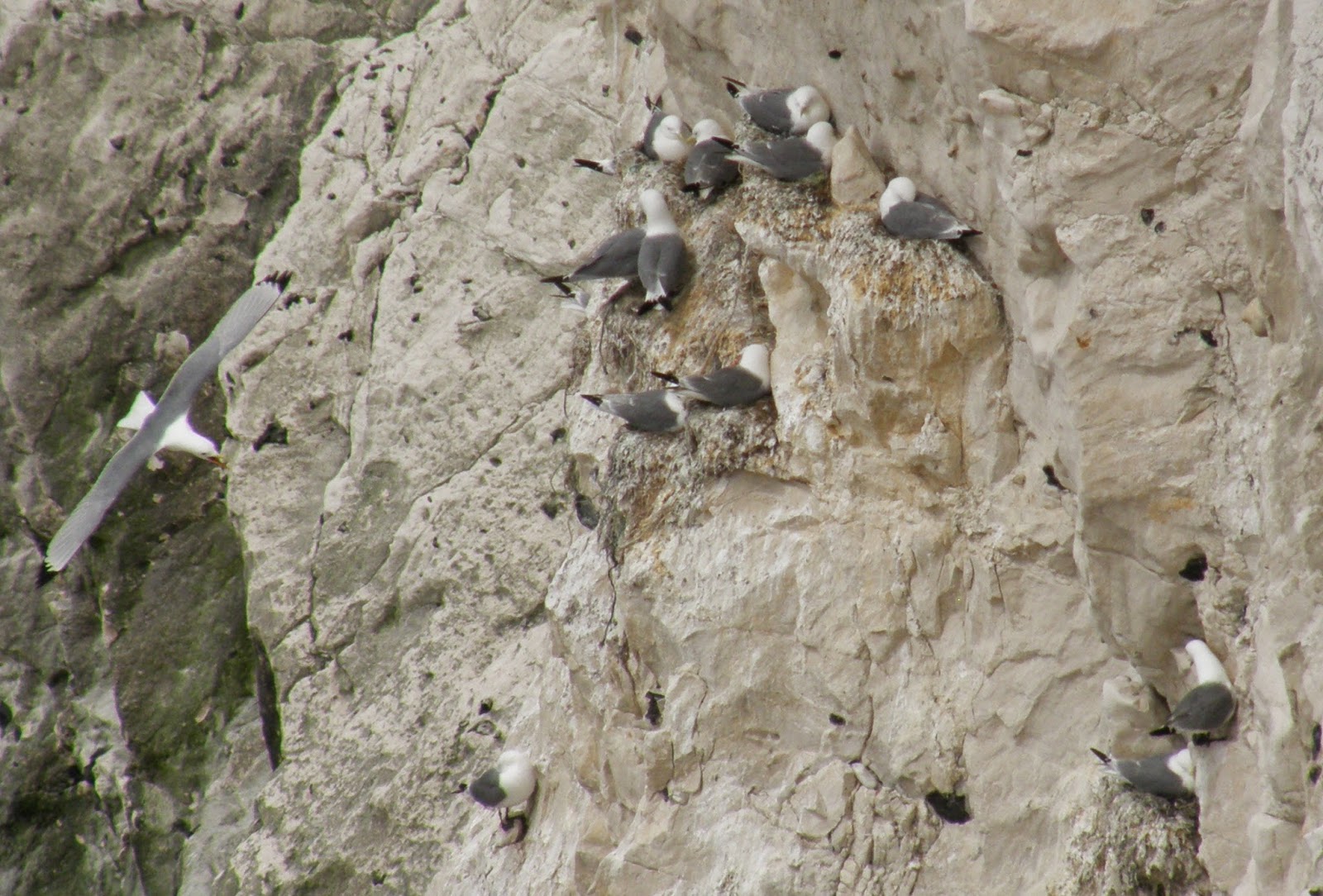Sheltered parts of the path were teeming with St. Mark’s flies. They are the large black ones with dangly legs that swarm about on warm days in the spring. They are harmless, but not one of our more attractive insects. The swallows and house martins that were teeming along the cliffs must have been having a feast! We had birdsong almost all the way along, with Whitethroats singing almost continuously, but also Chiffchaff, Willow Warbler, Skylark, Rock Pipit, Blackbird, Wren, Goldfinch, Greenfinch, Dunnock and Linnet.
There were ravens overhead and a couple of Buzzards. Out at sea there were Cormorants and one or two Gannets cruising in wide circles. Close in to the cliffs there were Greater Black-backed and Herring Gulls and towards Carregwastad point we saw Fulmars. It wasn’t until we were walking back that we spotted the Fulmar colony of fifteen to twenty nests on a sheltered face of the cliff.
 |
| Seals having a snooze on the beach |
We saw Grey Seals bobbing up frequently in the bay, sometimes four at the surface at one time. There were some tiny inaccessible (to humans) beaches where a few had hauled out.
Bluebells were in flower all along the cliffs. They are smaller and more widely spaced than we are used to seeing in our Sussex woods and generally have only a few florets in each head, but they still make a nice show - and there is Stitchwort too, the best accompaniment to Bluebells. The vegetation changed noticeably with the geology as we passed from a section of heath to a section of green pasture. The heath sections were dominated in parts by Gorse, fully in flower, and in others by Heather. We found Heath Milkwort, larger and with fleshier leaves than the Common Milkwort that we are used to on our chalk downs. Right on the path there was a patch of Lousewort
Pedicularis sylvatica in full flower and a boggy section had Round-leaved Water Crowfoot with small white-petalled flowers and fleshy, clover-like leaves. On a rock there was Bird’s Foot
Ornithopus perpusillus. English Stonecrop covered some rocks, but was was not yet in flower. There were spikes of Foxgloves and Pennywort was frequent on stone walls. Sea Campion and Thrift were both to be seen, but not as profusely as on some stretches of the coast.
We encountered a small weevil on a lichen encrusted rock which had an unusual heart-shaped marking on its wing cases. I am hoping that someone at the NHM will be able to identify it for me. I got a reply straight away:
Graptus triguttatus, with a link to website with a much better photo than mine which confirmed the identification.









